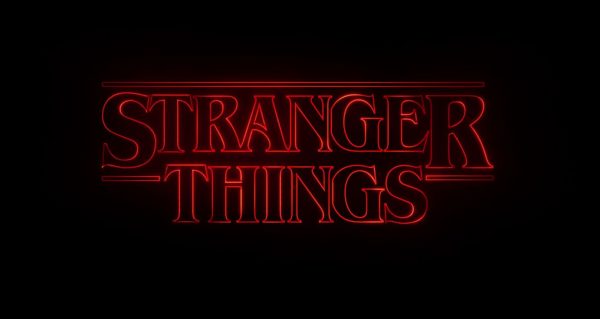Warning: Radical, artsy-fartsy film analysis theory about Stranger Things to follow!
Are you Stranger Things fan who’s left wondering about the origins of the Monster, and why Barb had to die? I have some theories for you to consider.
No film is only about what’s presented in its straightforward narrative. Good directors layer a variety of sub-themes and meanings into their work. Much of these only play out on the subconscious level and are hardly noticeable by those who accept the film “as is.” But these hidden cues still affect us deeply, often causing us to love or hate a certain movie, even if we don’t know why we feel so strongly about it. This is the allure of the hidden story-within-a-story nature of subliminal content. Directors the Duffer brothers have proven themselves students of this subliminal film-making, and it shows in Stranger Things.
Here’s My Theory…
On a symbolic level, I believe the Monster is part of Eleven’s personality. To put a finer point on it, you have to understand the theories of Sigmund Freud. The German psychoanalyst believed our personalities have three components: Id, Ego, and Superego. The Id is our instinctual urges. The Ego seeks to mediate the Id’s desires with reality. The Super-ego is our voice of conscience that reminds us of the punishments that happen when society’s rules, laws, and morals are broken. Given this model, I believe that the Monster is the Id, Eleven is the ego, and Barb is the Super-ego. And the Upside Down is Eleven’s mind where the battle between the three takes place.
Here are examples from season one that led me to this conclusion:
-
The Monster is first discovered after Eleven is placed inside a form of sensory-deprivation tank. Devices such as these are used to induce a deep meditative state. In other words, to go inside one’s mind. Eleven approaches the Monster while inside this realm of infinite darkness that symbolizes the inner workings of her own mind.
-
When Eleven touches the Monster’s back, both she and the creature let out a horrifying scream. It’s so loud and so terrifying that it tears open a rift between the world of Hawkins, Indiana and a parallel dimension known as the “Upside Down.” I believe this dimension is created once Eleven, as the Ego, physically splits from her Id, the Monster. The Upside Down becomes the creature’s home.
-
Like Freud’s concept of the Id, the Monster seems driven by two very primal and instinctual motivations: eating and breeding. In essence, these are the creature’s sole roles throughout season one.
-
Eleven also can be a ravenous eater, but unlike the Monster she finds ways to feed herself more or less within the boundaries of the laws of the day. Also, her favorite snack is Eggos, which could be a sly reference to the Ego.)
-
Why doesn’t the Monster devour Will Byers like it did its other victims. (Poor Barb!) is it because Will was able to escape and hide? I don’t think so. In fulfilling the role of Ego, I believe it’s Eleven that’s attempting to curb the Monster’s destructive appetite. It’s she who kept Will Byers alive and hidden in the upside down. It’s also she, through sheer force of her will, who kept the Monster from coming through the walls to devour Joyce Byers.
-
Another thing linking Eleven to the Monster is the fact that Will’s friends meet Eleven in the same stretch of woods where the creature abducted Will. Could the Monster have been acting out on Eleven subconscious desire to find age-appropriate playmates?
-
Eleven and the Monster are unable to escape each other. If the Upside Down is only a parallel dimension, then that dimension would exist beyond Hawkins, Indiana. But the creature never leaves the part of the Upside Down that’s inter-dimensionally tethered to the town. This is because Eleven never leaves the town. (Think about that.)
-
On at least one occasion, the Monster nearly comes through the wall to attack Joyce Byers in her home. What holds it back? The lack of blood? I don’t think so. Rather, this suggested Eleven’s control over this aspect of her personality.
-
As Eleven continues to mature and interact with Mike Wheeler and his friends, the Monster becomes stronger. This would suggest the Ego and the Id being at war with each other over which direction the personality, as a whole, will take. This is why it becomes apparent to Eleven and others that the Monster must be destroyed.
-
Whenever Eleven uses her power to harm others, she bleeds from her nose. The Monster is drawn to blood. This blood ritual connection is yet another thing that ties them together.
-
Eleven almost spills the beans, herself. During the scene at the rock quarry, she tries to tell Mike that she’s responsible for everything that’s happened. While Mike is quick to dismiss the idea, I believe this is a pivotal clue within the series.
-
Neither bear traps, spiked baseball bats, or thousands of rounds of ammo could stop the Monster. Only Eleven is able to destroy the beast. In doing so, she coincidentally vaporizes herself. (Hmmm… I wonder what that’s all about?)
-
Which brings me to why Barb had to die. She tried to serve as Nancy Wheeler’s Super-ego during the ill-fated party scenes, but the Monster snatched her, instead. By dying in the Upside Down, Barb’s essence might be incorporated into Eleven, who also is likely trapped in this strange parallel dimension. Because Eleven was raised within the MKULTRA project, all she has is her Ego and Id. Mike Wheeler served as Eleven’s Super-ego, but Eleven is no longer a part of the prime material plane. It makes sense that the essence of Barb now will fill this vital yet missing component of Eleven’s personality.
Dungeons & Dragons is the Key
If you need one more clue to illustrate that Eleven and the Monster are one in the same, look to the boys’ Dungeons & Dragons game. The Demogorgon, which the boys fought in the beginning, is a two-headed demon known as the “Prince of Demons” in the D&D world. Throughout season one, the Monster is compared to the “Demogorgon.” But the Monster only had one head. Or did it? Could Eleven be the missing “proud princess” the boys ask about at the conclusion of their last D&D game in the final episode? I believe so.
We Shall See…
Hopefully, I’ve supported my theory well enough to add another layer of depth to this amazing show. If nothing else, it gives us even more to think about while we (im)patiently await the release of season two of Stranger Things. It would be nice to see the reintegration of Eleven’s personality splits to become one of the several themes of season two. The Duffer brothers certainly did a good job of splitting them up in the first. Only time will tell what Netflix and the Duffer brothers have in store for season two, but it’s sure to be some… stranger things.



